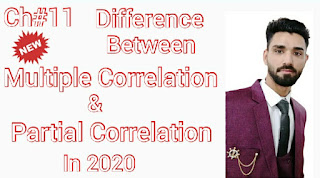QUESTIONS WITH ANSWERS:
What is Time Series?
Arrangement of data according to time period is called as Time Series.
OR
Cronological arrangement of data is defined as Time Series.
What are the Components of Time Series?
REASONS:
Reasons of fluctuations (Ups and Downs) in Time Series are the components of time series.
COMPONENTS OF TIME SERIES:
There are Four Components of Time Series:
1 - Secular Variations (Trend)
2 - Seasonal Variations
3 - Cyclic Variations
4 - Irregular Variations
What are the Secular Variations?
The Variations which are very long term and which may covers more than 10 years to occur are known as Secular Variations. These are slow and gradual changes.
REAL LIFE EXAMPLE:
The transport system in old time is converted into the modern transport system and it took very long time to change.
What are the Seasonal Variations?
The Variations which are caused by Seasons, Religious festivals and our Traditions are called as Seasonal Variations. These changes reoccur after the fix interval of time.
EXAMPLE:
Great demand of warm clothes near winter.
What are the Cyclic Variations?
The Variations which are long term oscillations and which are like swings or waves type movements are called as Cyclic Variations.
Most Important Real Life Example:
The main example of Cyclic Variations is the life of a business man.
There are four Stages in the life of a business man:
1 - Prosperity
2 - Contraction (Recession)
3 - Depression (Trough)
4 - Recovery
What are the Irregular Variations?
The Variations which are due to accidental events or random events like floods, earthquakes, famines, wars.
best of luck!!
Follow me on Facebook ID: Muhammad Asad Irshad
Follow me on YouTube Channel: Asad International Academy






































